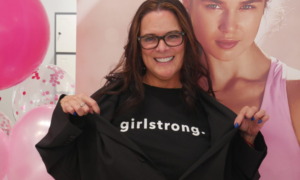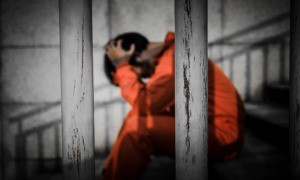Tallahassee, Fla.
(850) 414-6466
www.djj.state.fl.us
Objective: Using hands-on art sessions to spark positive development among youths in detention, many of whom are tactile learners.
In a Nutshell: Local Florida artists work with groups of detainees in juvenile detention centers. The art projects – which include creating jewelry, making model airplanes and holding poetry contests – are designed to reduce anger and promote artistic interests and problem-solving.
Where It Happens: In 12 regional juvenile detention centers in central and northern Florida. The program began in Florida’s nine northern facilities, and this year added three central centers. Art sessions take place about four times a month for six months a year.
When It Began: The program grew out of a February 2001 meeting between Florida Department of Juvenile Justice (DJJ) detention officials and representatives of the Florida division of VSA arts, an international nonprofit that funds art projects for people with disabilities. Detention centers were invited to submit grant applications to VSA.
Who Started It: The Pinellas County Detention Center served as the pilot location. The program was developed by Joel DeVolentine, regional director of DJJ’s North Detention Services, and Terri Eggers, an education specialist with North Detention Services, with help from VSA representatives Gay Drennon and Marian Winters.
Who Runs It: Each detention center develops its own program with assistance from VSA arts of Florida. Winters and Eggers serve as regional coordinators.
Early Obstacles: Identifying local artists willing to work with youth was a challenge for rural centers. Also, corrections personnel had to coordinate activities to ensure the safety and security of youth, art staff and personnel. For instance, the use of clay was banned because it can interfere with internal locks.
How They Overcame Them: By following local media coverage of the arts, detention center teachers identified artists to participate and worked to create publicity for those agreeing to visit the center.
Cost: This year’s budget is $13,000. Each center gets $1,000, while $700 goes toward administrative and training support.
WHO PAYS: VSA arts of Florida.
Who Else Kicked In: The Florida Department of Juvenile Justice has contributed in-kind personnel support. Participating artists donate their time.
Youth Served: The program is voluntary and serves both genders. Participants range from 7 to 19 years old, with about 30 percent classified as in need of special education. To date, about 8,000 youth have participated.
Youth Turn-On: The program gives offenders the opportunity to produce expressive artwork free from criticism. “All youth are assessed to determine their predominant learning styles,” says Eggers. “Many of these students are hands-on learners and obtain additional benefit from the ability to express themselves through a variety of media. The increased interest in learning is visible.”
Youth Turn-Off: The fear of failure keeps some youth who suffer from a negative self-image from participating. “The opportunity to express themselves in an art form often brings negative feelings and experiences to the surface,” Eggers says. But “these activities may serve as a catalyst to refer youth for follow-up counseling and/or psychological services.”
Research Shows: Though attempts to evaluate certain outcomes have been slow to develop, DeVolentine says the one-year pilot program provided anecdotal indications of effectiveness. Therapists noted increased skills among the youths in managing anger and impulse control. “Educators also report visible reductions in stress and reduced incidents of disrespect or violence among project participants,” DeVolentine says.
What Still Gets in the Way: Short-term progress is difficult to measure. “It is always a challenge to measure the short-term effects of exposing youth to mentors and quality programming, but we know it has a positive impact,” DeVolentine says.





























